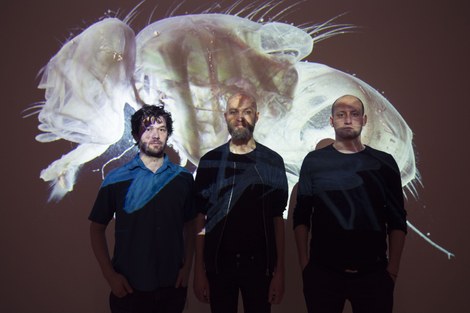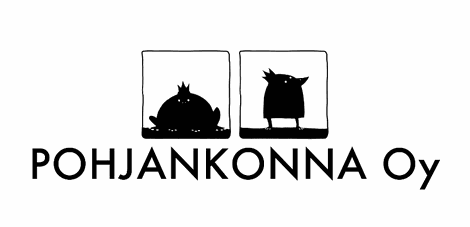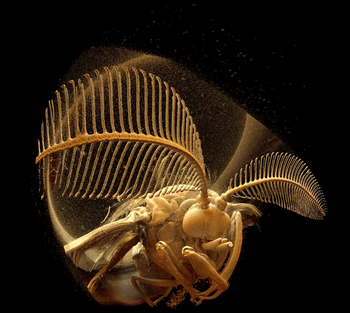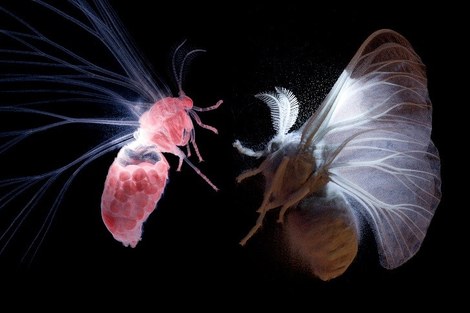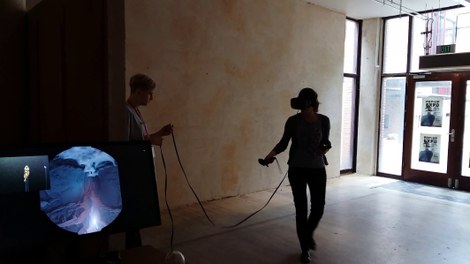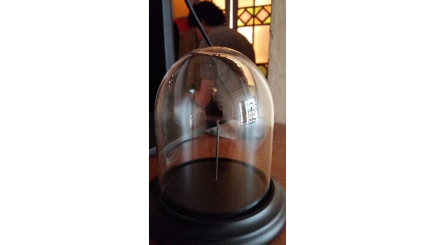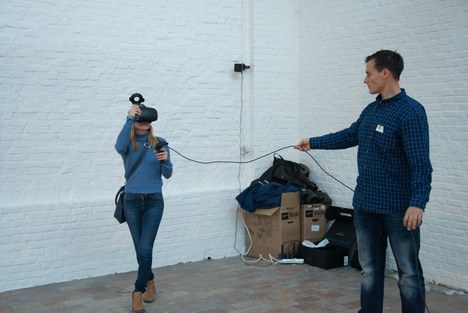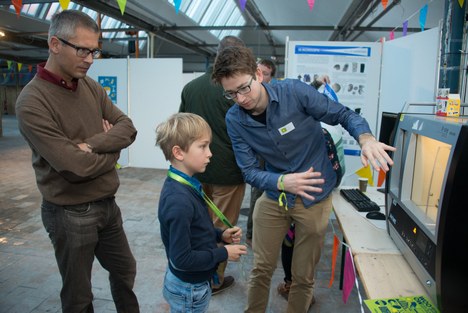Pohjankonna Oy: where science meets art
Introduction
Pohjankonna Oy is a Finnish production house of short movies and full-dome documentaries formed by the duo Pekka Veikkolainen and Hannes Vartiainen. Janne Pulkkinen joined the group later. Since 2010, UGCT has a very special and fruitful collaboration with this production house, who is a pioneer in the use of high-resolution CT data in these media.
Death of an insect
While doing research for an experimental nature documentary about insects, the people behind Pohjankonna Oy ran into a news article referring to an article in Zootaxa about exploring the remains of a 50 million year old arachnid trapped in amber using X-Ray micro-CT imaging (Penney et al. 2007). This technique seemed to perfectly match their needs to visualize macroscopic, fragile samples with great creative control and precision, and offered a complementary view on the insects in the movies, which had been imaged with various cameras and optical tools based on the visual spectrum.
After the initial contact, UGCT provided a few data sets of insects, including one of a fly. In 2010, the short movie “Death of an insect” was released, to our knowledge the first movie explicitly making use of a micro-CT data set. The resulting images can be seen in the movie starting at 05:45.
A novel 3D rendering engine
In a next project (discussed in more detail below), Pohjankonna Oy directed and produced a documentary movie made for full-dome planetariums in science centers. The native format of the film is a 4K (4096 x 4096 pixels) hemispherical projection. This creates challenges in visualizing and rendering micro-CT data sets into hemispherical footage using a two-dimensional intermediate format. As no software exists for this task, Janne Pulkkinen who works as an Art Director for Remedy Entertainment, has as a personal side project developed and programmed an interactive volumetric path tracer running on commodity GPUs to visualize CT data and to render it natively to the 4K hemispherical format. This tool uses a 2D image as a light source, and by using images of natural lighting (e.g. sunsets or cloudy skies), the rendering gets a natural feeling. Furthermore, by using a short movie as input for the background lighting, a sense of motion is put into the (still) micro-CT data.
Secret World of Moths
In December 2015, the documentary film The Secret Word of Moths was aired for the first time in the Helsinki Heureka science centre. Besides various filming techniques based on the visible light spectrum (time-lapse, slow-motion, etc), the film contains a large amount of micro-CT data, acquired at UGCT and the Helsinki University Micro-Imaging Facility.
The film (with the following trailer) has also been presented in a mobile planetarium (provided by UvA) at the Nijmegen Go Short film festival (trailer on their Facebook page) and the celebrations of the 200th anniversary of Ghent University (“Iedereen UGent”).
Virtual reality tool
After the release of the Secret World of Moths, the rendering engine was extended to allow for 3D rendering using the HTC Vive Virtual Reality goggles. With this feature, the spectator can virtually wander around in the 3D object. Most demonstrations are given using a data set of a tiny fish (see pictures below), but many data sets are currently available.
The VR tool has already been demonstrated at several film festivals, including the Imagine Science Film Festival in Abu Dhabi (of which a report was published on a Nature blog ) and the Nijmegen Go Short, and also by UGCT at the Wooow Festival (Flemish Science Day).
